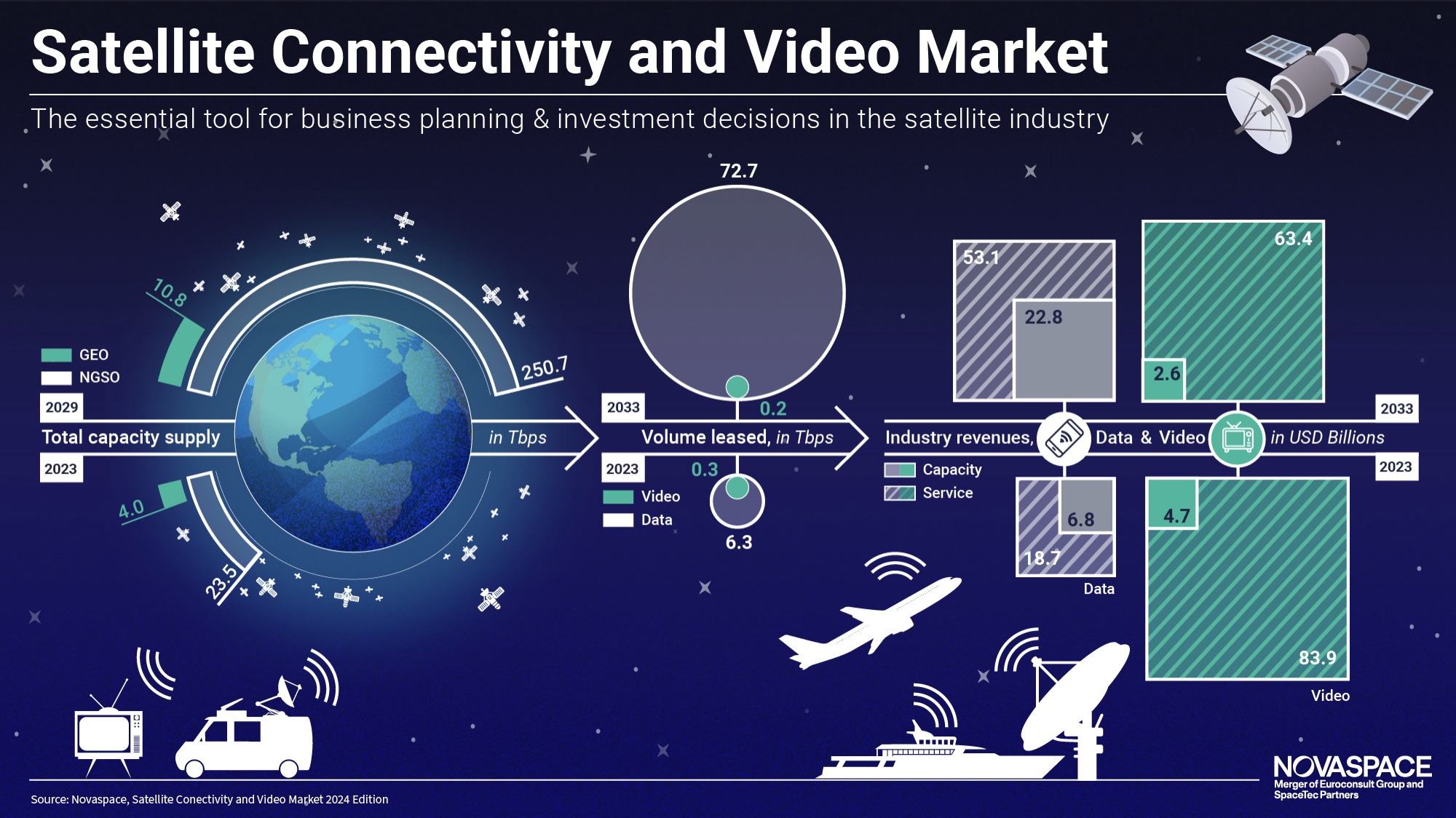TAMPA, Fla. — Constellations in non-geostationary orbit (NGSO) are set to overtake geostationary satellites in revenue by 2028, according to Novaspace research published Sept. 15.
The geostationary Earth orbit market represented around 85% of the $12 billion in total satellite capacity revenue in 2023, despite a recent slowdown in GEO orders from operators waiting to see how the rise of Starlink and other NGSO constellations shake out.
However, Novaspace expects NGSO capacity revenues to grow at a compound annual growth rate (CAGR) of 27% to around $18 billion by 2033, representing more than two-thirds of the market as Amazon’s Project Kuiper and other large constellations join the fray.
Total satellite capacity revenue from all orbits is projected to more than double over the decade to about $25 billion, Novaspace manager Dimitri Buchs said, driven mostly by the aviation, enterprise, land mobility and government connectivity markets.
Flood of supply
In just the past three years, the supply of global satellite capacity soared eightfold to around 27 terabits per second (Tbps) in 2023, thanks mostly to SpaceX’s Starlink, which accounts for more than 80% of this.
Novaspace estimates Starlink — currently the world’s largest constellation with more than 6,000 satellites in orbit — accounted for 70% of high-throughput satellite traffic last year.
SpaceX CEO Elon Musk recently said Starlink will “probably deliver over 90% of all space-based internet traffic next year.”
NGSO satellites can provide high-speed broadband at lower latency than spacecraft operating farther away in GEO, which is important for video calls, gaming, and using the latest virtual tools and applications hosted in the cloud.
Satellites in lower Earth orbits can also cover the poles to keep airlines connected during international flights, unlike their geostationary peers fixed above the equator.
Still, GEO spacecraft are better at delivering larger amounts of capacity to high-traffic areas.
Novaspace said high-throughput GEO satellites are continuing to gain significant traction in aviation, military, enterprise and other premium market segments where stringent Service Level Agreements (SLAs) are popular.
Falling prices, rising demand
According to Novaspace, global satellite capacity is expected to reach 240 Tbps by 2028.
The flood of NGSO satellites entering the market, in particular, is also set to continue lowering the average revenue per user (ARPU) for capacity.
Satellite capacity ARPU fell 40% year-on-year in 2023 to around $150 a month per megabit per second of data, Buchs told SpaceNews, and is on course to fall below $100 for most segments by 2033.
Plummeting prices are expected to help unlock new markets for satellite connectivity in areas difficult to connect by terrestrial means, including near urban centers and over oceans.
The shifting competitive landscape has also led to a surge in multi-orbit services, partnerships and acquisitions as legacy GEO operators adapt to the rapidly evolving market.
Still, Novaspace projects multi-orbit service revenues to reach $5 billion by 2033, compared with $117 billion in total service revenues.
Buchs, who is also the editor for Novaspace’s latest annual Satellite Connectivity and Video Market report, expects capacity demand from all orbits to grow from 6.5 Tbps in 2023 to 73 Tbps in 2033.
However, multiple uncertainties cloud these projections, including how much Amazon could leverage its significant financial firepower to break into the market with significantly lower prices.
Production, launch, regulatory and other factors often responsible for delaying constellation deployments could also dramatically affect the outlook.
Related
Read the original article here
